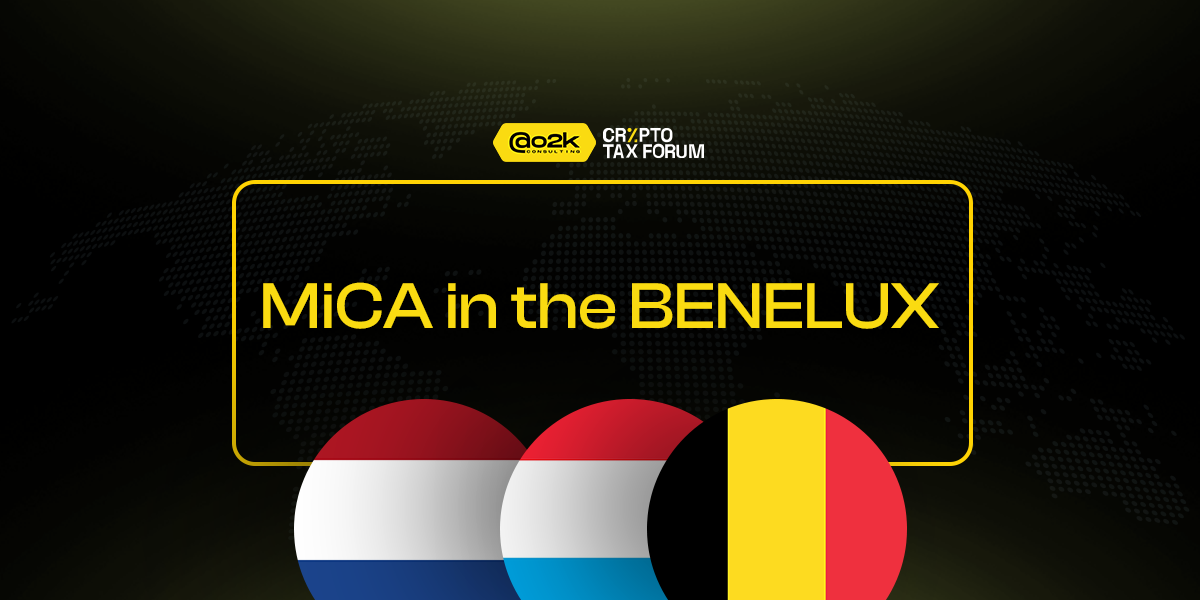How the Netherlands, Belgium, and Luxembourg Are Implementing Europe’s Landmark Crypto Law

When the EU’s long-awaited Markets in Crypto-Assets Regulation (MiCA) finally became fully applicable on December 30, 2024, it marked a turning point for Europe’s digital asset industry.
For the first time, crypto-asset service providers and issuers across the continent faced a single, harmonized rulebook for licensing, compliance, and supervision.
However, while MiCA is an EU-wide regulation, its impact on the ground has been anything but uniform. Each member state must still decide how to designate authorities, manage transitional regimes, and bring the law to life within its own borders.
Nowhere is this diversity more visible than in the Benelux region i.e Belgium, the Netherlands, and Luxembourg.
In this blog, we will journey through each of these countries to see how they are interpreting and applying the MiCA regulation and what that means for crypto businesses seeking to operate across Europe.
Belgium
Although MiCA became applicable in Belgium on the same day as across the rest of the EU, the country had yet to pass the national laws needed to put the framework into motion or formally empower the Financial Services and Markets Authority (FSMA). This is probably because in the past, there have been no specific laws governing crypto-assets in Belgium
Without that legal backbone, Belgium found itself in a strange position where the rules were technically in force, but the machinery to apply them simply wasn’t there.
How The Stall Affects Belgian Crypto Businesses
The delay has put Belgian crypto firms in a tough spot. With no domestic licensing system in place, local CASPs were unable to apply for a MiCA license, forcing many to sit idle while waiting for the government to act. In the meantime, only foreign firms with licenses from other EU countries could operate in Belgium through passporting.
This has created a competitive imbalance. Belgian startups and service providers, once well-positioned to benefit from MiCA’s harmonized framework, now risk losing ground to international players who can seize the local market first.
For Belgian crypto businesses, the regulatory gap brings real uncertainty. Companies hoping to grow or secure credibility under MiCA must either wait for the FSMA to be empowered or pursue licenses abroad often at higher cost and complexity. Meanwhile, foreign competitors can move in more quickly, gaining first-mover advantages.
In short, the longer the delay drags on, the more Belgium risks falling behind its Benelux neighbors.
The Netherlands
While MiCA officially came into force across the EU in December 2024, the Netherlands was already one step ahead. A month earlier, the government had laid solid groundwork by passing a MiCA implementation decree alongside two parliamentary acts.
These acts amended Dutch financial and anti-money laundering laws, designating clear roles for supervisors. Under this regime:
- De Nederlandsche Bank (DNB) was given authority over asset-referenced tokens (ARTs) and e-money tokens (EMTs).
- The Dutch Authority for the Financial Markets (AFM) was placed in charge of supervising most CASPs.
- Enforcement powers were expanded, allowing regulators to suspend services, require disclosures, or even impose criminal penalties for serious violations.
Interestingly, unlike most EU countries that opted for MiCA’s full 18-month transition period, the Netherlands took a bolder approach. The government cut the deadline short to June 30, 2025, meaning Dutch CASPs must comply with the new rules much sooner than their European peers. This decision signaled that the Netherlands is moving fast and enforcing early to position itself as a leader.
No doubt, this proactive stance quickly bore fruit. On MiCA’s very first day of enforcement, the AFM issued the EU’s first CASP licenses to MoonPay, BitStaete, ZBD, and Hidden Road. It was a landmark moment that demonstrated the country’s readiness not just to adopt MiCA, but to lead Europe’s new crypto era.
What It Means for Businesses
For Dutch crypto firms, the new framework is both an opportunity and a challenge. On one hand, they benefit from early regulatory clarity and the prestige of operating in Europe’s frontrunner market. On the other hand, the shorter transition period and stricter supervision mean they must invest in governance, AML/CFT compliance, IT resilience, and disclosure requirements faster than their peers abroad.
Luxembourg
Luxembourg has taken a steady, methodical approach to MiCA. While MiCA became fully applicable in December of 2024, the country had already been preparing earlier.
Provisions for asset-referenced tokens (ARTs) and e-money tokens (EMTs) came into force on June 30, 2024, giving issuers an early sense of how the new regime would work. At its core, MiCA promises to harmonize Europe’s crypto-asset markets by providing legal certainty, fostering innovation, and safeguarding consumer protection, market integrity, and financial stability values that align closely with Luxembourg’s reputation as a trusted financial hub.
The Commission de Surveillance du Secteur Financier (CSSF) was formally designated as the country’s MiCA authority in February 2025, tasked with overseeing licensing, supervision, and enforcement for all crypto-asset services. This decision reinforced Luxembourg’s intent to bring its strong tradition of regulatory oversight into the digital asset era.
To smooth the transition, Luxembourg introduced an 18-month grandfathering period for Virtual Asset Service Providers (VASPs) that were already registered with the CSSF before December 30, 2024. These firms can continue operating until July 1, 2026, or until they are either granted or denied a MiCA authorization, whichever comes first.
For many businesses, this window offers breathing room to adapt their operations, strengthen compliance frameworks, and prepare for the stricter requirements of a CASP license. Still, the CSSF has made it clear that the first full licenses are unlikely to be issued before 2026, as the EU continues to finalize the technical standards that will guide national supervisors.
The timeline of Luxembourg’s MiCA journey reflects this careful pacing:
- June 29, 2023: MiCA formally entered into force.
- June 30, 2024: ART and EMT rules became applicable.
- December 30, 2024: Full MiCA provisions kicked in; the old VASP registration regime closed to new applicants.
- February 6, 2025: CSSF was officially designated as Luxembourg’s MiCA authority.
- July 1, 2026: End of the transitional period. Unlicensed firms lose the right to provide crypto services.
Securing a CASP License in Luxembourg
For firms preparing to apply, getting a CASP license is far from easy. Applications must include a detailed program of activities covering:
- Services
- Governance
- Customer base
- The business model
- Proper assessments for senior management.
Strong AML/CFT frameworks are non-negotiable, particularly after Luxembourg’s 2025 national risk assessment officially classified the crypto sector as “high risk.” Applicants must also show robust IT and cybersecurity measures, disaster recovery planning, prudential resources like minimum capital requirements, and strict client-asset segregation.
For issuers of ARTs and EMTs, white papers and disclosure documents must be approved by the CSSF or another EU authority before launch.
Conclusion
MiCA may be a single regulation designed to unify Europe’s crypto landscape, but the Benelux experience shows just how differently it can play out on the ground.
The Netherlands has raced ahead, laying down laws early and issuing the EU’s very first CASP licenses, a bold move that gives its firms a crucial head start. Luxembourg on the other hand has chosen a steadier course, offering structure and certainty through its transitional regime, even if businesses must wait until 2026 for full licenses. Belgium, however, lingers in limbo, its firms watching from the sidelines while competitors from other EU countries step in through passporting.
These three approaches highlight that under MiCA, timing and execution matter as much as the rules themselves. For crypto businesses, success in Europe will depend not only on compliance but also on choosing the right jurisdictional strategy because in the race to build the future of digital assets, where you start can shape how far you go.
📚 Sources
- 📜 EUR-Lex: MiCA Regulation (EU) 2023/1114
- De Nederlandsche Bank – MiCA implementation
- 📈 AFM – MiCA supervision
- CSSF Luxembourg – Crypto-Assets Regulation
- FSMA Belgium – Crypto information




.png)






















.jpeg)


























.jpg)






































